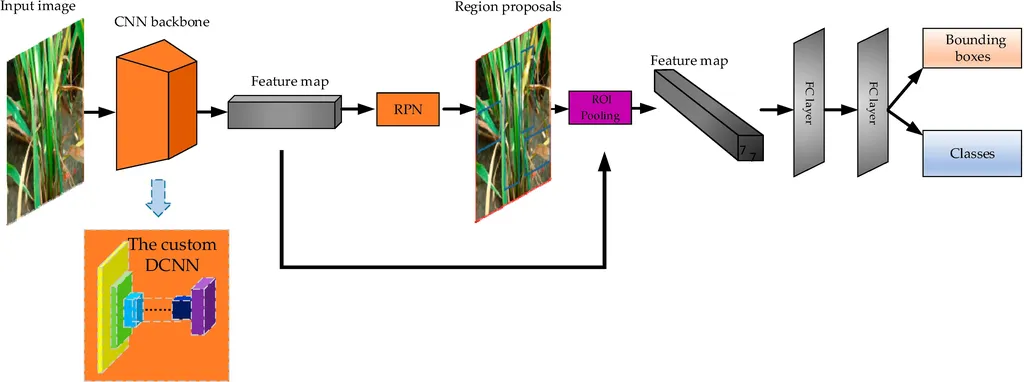In the heart of China’s Yunnan Province, researchers are redefining the boundaries of precision agriculture, armed with nothing but innovative algorithms and a determination to combat rice diseases. Leading this charge is Jianian Li, a faculty member at the Kunming University of Science and Technology, who has recently published a groundbreaking study in the journal *Frontiers in Plant Science*, translated to English as “Frontiers in Plant Science.”
Rice, a staple food for over half of the world’s population, is under constant threat from diseases like rice blast, brown spot, and bacterial leaf blight. Traditional methods of disease detection often rely on manual inspection, which is time-consuming, labor-intensive, and prone to human error. Enter Li’s team, who have developed a lightweight, yet powerful, rice leaf spot segmentation model that could revolutionize disease detection and management in the field.
The model, dubbed MMPC-DeepLabv3+, is a significant improvement over existing segmentation models. It combines a lightweight feature extraction network, MobileNetV3_Large, with several innovative modules designed to enhance its decision-making capabilities and reduce computational overhead. The multi-scale detail enhancement (MSDE) module, for instance, improves the model’s ability to handle transitional regions like spot gaps, while the PagFm-Ghostconv Feature Fusion (PGFF) module significantly reduces the model’s computational overhead.
“The MMPC-DeepLabv3+ model demonstrates superior performance over other state-of-the-art models,” Li explains. “It achieves an optimal balance between recognition accuracy and computational efficiency, making it ideal for deployment in field environments.”
The model’s efficiency is indeed impressive. With floating-point operations reduced to 9.695 G and the number of model parameters to 3.556 M, it outperforms the baseline DeepLabv3+ by a significant margin. This reduction in computational overhead is crucial for real-world applications, where resources are often limited.
The commercial implications of this research are vast. Precision agriculture is a rapidly growing sector, with the global market size expected to reach $12.8 billion by 2026. Accurate and efficient disease detection is a key component of precision agriculture, enabling farmers to make data-driven decisions and optimize resource use. Li’s model could play a pivotal role in this sector, providing farmers with a powerful tool for disease detection and management.
Moreover, the model’s efficiency makes it suitable for deployment on edge devices, such as drones and smartphones, further expanding its potential applications. “Our model could be integrated into existing agricultural systems, providing real-time disease detection and management advice to farmers,” Li suggests.
The research also opens up new avenues for future developments in the field. The innovative modules proposed by Li’s team could be adapted and applied to other segmentation tasks, while the model’s efficiency could inspire further research into lightweight, yet powerful, deep learning models.
In conclusion, Li’s research represents a significant step forward in the field of precision agriculture. By combining innovative algorithms with a deep understanding of the challenges faced by farmers, his team has developed a model that could revolutionize disease detection and management in the field. As the world grapples with the challenges of feeding a growing population, research like this offers a glimmer of hope, demonstrating the power of technology to drive sustainable and efficient agricultural practices.

